Novel Carbon Fibre Composite Centrifugal Impeller Design, Numerical Analysis, Manufacturing and Experimental Evaluations
Abstract
1. Introduction
2. Materials and Methods
2.1. Materials
2.2. Numerical Analysis of the New Impeller Design
2.2.1. Composite Impeller Aerodynamic Analysis
2.2.2. Composite Impeller Structural Analysis
2.3. Balancing Procedure
2.4. Experimental Test Bench
3. Results and Discussions
3.1. Aerodynamic Analysis
3.2. Structural Analysis
3.3. Blades and Impeller Manufacturing
3.4. Test Bench Results
4. Conclusions
5. Patents
Author Contributions
Funding
Institutional Review Board Statement
Informed Consent Statement
Data Availability Statement
Acknowledgments
Conflicts of Interest
Nomenclature
| Ø | Diameter [mm] |
| η | Efficiency [%] |
| e | Compression ratio |
| ρ | Density [g/cm3] |
| 1D | One-dimensional |
| 2D | Two-dimensional |
| 3D | Three-dimensional |
| b | Impeller thickness [mm] |
| c | Distance between the mass centre and the furthermost bearing [mm] |
| Dmax | Total displacement [m] |
| Ε | Young Modulus [N/mm2] |
| e | Centre of mass deviation from its axis: 0.08 |
| G | Balancing class: 2.5 |
| l | Distance between bearings [mm] |
| M | Impeller mass with shaft [kg]: 11 kg (impeller mass: 2.271 kg) |
| Ne | Nominal speed [rot/min]: 17,250 rot/min |
| P | Power [kW] |
| S | Score [%] |
| Uc | Maximum permissible couple unbalance [g∙mm] |
| Uin | Initial unbalance [g∙mm] |
| Uin,A | Initial unbalance in the left (impeller plane) [g∙mm] |
| Uper | Maximum permissible unbalance [g∙mm] |
| Uper,A | Permissible unbalance in left (impeller) plane [g∙mm] |
| Uper,B | Permissible unbalance in the right (skid) plane [g∙mm] |
| Us | Maximum permissible static unbalance [g∙mm] |
| y+ | Dimensionless thickness |
Appendix A
References
- Mason, K.; Thermoplastic composite pipe: Displacing metals in the deep sea. Composites World, March 2019, pag. 16-19. Available online: https://www.compositesworld.com/articles/thermoplastic-composite-pipe-on-the-rise-in-the-deep-sea (accessed on 1 September 2021).
- Mallick, V. Thermoplastic composite based processing technologies for high performance turbomachinery components. Compos. Part A 2001, 32, 1167–1173. [Google Scholar] [CrossRef]
- Kota, N.S. A review on application of composite materials to increase the efficiency of the centrifugal pumps. Int. J. Eng. Trends Technol. (IJETT) 2015, 27, 186–189. [Google Scholar]
- Patil, M.S. Composite Wound Axial Turbomachinery Impeller for Green-Renewable Energy: Applications and Numerical Structural Analysis. Doctor of Philosophy, Michigan State University, Lansing, MI, USA, 2014. [Google Scholar]
- Yu, W.; Pollayi, H. Modelling matrix cracking in composite rotor blades within VABS framework. Compos. Struct. 2014, 110, 62–76. [Google Scholar] [CrossRef]
- Stevens, P.L. Active Interrogation of Helicopter Main Rotor Faults Using Trailing Edge Flap Actuation. Ph.D. Thesis, The Pennsylvania State University, State College, PA, USA, 2001. [Google Scholar]
- Pawar, M.P. Structural Health Monitoring of Composite Helicopter Rotor Blades. Ph.D. Thesis, Department of Aerospace Engineering, Indian Institute of Science, Bengaluru, India, 2006. [Google Scholar]
- Pawar, P.; Ganguli, R. Modelling progressive damage accumulation in thin walled composite beams for rotor blade applications. Compos. Sci. Technol. 2006, 66, 2337–2349. [Google Scholar] [CrossRef]
- Lakshmanan, K.A.; Pines, D.P. Damage identification of chordwise crack size and location in uncoupled composite rotorcraft flexbeams. J. Intell. Mater. Syst. Struct. 1998, 9, 146–155. [Google Scholar] [CrossRef]
- Mahadevan, S.; Mao, H. Fatigue damage modelling of composite materials. Compos. Struct. 2002, 58, 405–410. [Google Scholar] [CrossRef]
- Hodges, D.H.; Yu, W. A rigorous, engineer-friendly approach for modelling realistic, composite rotor blades. Wind Energy 2006, 10, 179–193. [Google Scholar] [CrossRef]
- Lin, J.; Jin, Y.; Zhang, Z.; Cui, X. Strength analysis of the carbon-fibre reinforced polymer impeller based on fluid solid coupling method. Math. Probl. Eng. 2014, 2014, 803261. [Google Scholar] [CrossRef]
- Hong, Y.; He, X.D.; Wang, R.G. Vibration and damping analysis of a composite blade. Mater. Des. 2012, 34, 98–105. [Google Scholar] [CrossRef]
- Vipin, V.; Jiju, P.P. Analysis of turbine blade made of composite materials used in steam turbines. Int. J. Innov. Eng. Technol. (IJIET) 2015, 5, 167–179. [Google Scholar]
- Wollmann, T.; Modler, N.; Dannemann, M.; Langkamp, A.; Nitschke, S.; Filippatos, A. Design and testing of composite compressor blades with focus on the vibration behaviour. Compos. Part A 2016, 92, 183–189. [Google Scholar] [CrossRef]
- Gude, M.; Filippatos, A.; Langkamp, A.; Hufenbach, W.; Kuschmierz, R.; Fischer, A.; Czarske, J. Model assessment of a composite mock-up bladed rotor based on its vibration response and radial expansion. Compos. Struct. 2015, 124, 394–401. [Google Scholar] [CrossRef]
- Martynyuk, L.A.; Afanasiev, D.V.; Bykov, A.D.; Ezhov, A.D.; Mezintsev, M.A. The study of the applicability of polymer composite materials for the manufacture of the impeller of a centrifugal compressor. Mater. Sci. Eng. 2021, 1060, 012026. [Google Scholar] [CrossRef]
- Martynyuk, L.A.; Bykov, L.V.; Ezhov, A.D.; Talalaeva, P.I.; Adanasiev, D.V. Experience in using anisotropic properties of composites in engineering the compressor impeller of a small-size gas turbine engine. MATEC Web Conf. 2020, 329, 0302. [Google Scholar] [CrossRef]
- Draghici, S.; Vintila, I.S.; Mihalache, R.; Petrescu, H.A.; Tuta, C.S.; Hadar, A. Design and fabrication of thermoplastic moulds for manufacturing CFRP composite impeller blades. Mater. Plast. 2020, 57, 290–298. [Google Scholar] [CrossRef]
- Dhere, M.C.; Badadhe, A.M.; Patil, A.S.; Bankar, M.B. Design, analysis & material optimization of submersible pump impeller by FEA & experimentation. Int. J. Sci. Technol. Eng. (IJSTE) 2018, 5, 46–55. [Google Scholar]
- UTComp. Case Study: FRP Impeller Failure during Commissioning. May 2020. Available online: https://utcomp.com/case-study-frp-impeller-failure-during-commissioning/ (accessed on 28 September 2021).
- Kumar, K.U.; Reddy, N.V.; Reddy, M.R. Design and Simulation of Centrifugal Pump Using Composite Materials, International Journal & Magazine of Engineering. Technol. Manag. Res. 2016, 3, 985–992. [Google Scholar]
- Chukov, D.I.; Stepashkin, A.A.; Salimon, A.I.; Kaloshkin, S.D.; Pyatov, I.S. Mechanical Properties and Chemical Resistance of New Composites for Oil Pump Impellers. Appl. Sci. 2018, 8, 750. [Google Scholar] [CrossRef]
- Ma, L.; Zhao, Q.; Zhang, K.; Zhang, X.; Zhao, M. Aeroelastic analysis and structural parametric design of composite rotor blade. Chin. J. Aeronaut. 2021, 34, 336–349. [Google Scholar] [CrossRef]
- National Research and Development Institute for Gas Turbines COMOTI, Bucharest, Romania, Centrifugal Air Electrocompressors. Available online: http://www.comoti.ro/en/Compresoare-Centrifugale-de-Aer.htm (accessed on 28 September 2021).
- Information on M49/42%/200T2X2/CHS-3K Prepreg Material Data Sheet. Available online: https://www.hexcel.com/Resources/DataSheets/Prepreg (accessed on 5 September 2021).
- Information on Aluminium 2024 Material Data Sheet Sheet. Available online: https://www.gilinox.ro/content/page/aluminum-sheets (accessed on 5 September 2021).
- Mendenhall, M.R.; Childs, R.E.; Morrison, J.H. Best Practices for Reduction of Uncertainty in CFD Results. In Proceedings of the 41st Aerospace Sciences Meeting and Exhibit, Reno, NV, USA, 6–9 January 2003; American Institute of Aeronautics and Astronautics: Reston, VA, USA, 2012; p. AIAA 2003-411. [Google Scholar] [CrossRef]
- Baidar, B.; Cervantes, M.J. Numerical study of wall shear and velocities using a commercial CFD code: Some crucial aspects to consider. Hydro Nepal. 2017, 21, 45–49. [Google Scholar] [CrossRef][Green Version]
- Vasiliev, V.; Morozov, E. Mechanics and Analysis of Composite Materials; Elsevier Science: Oxford, UK, 2001; ISBN 9780080453729. [Google Scholar]
- Aoki, R.; Higuchi, R.; Yokozeki, T.; Aoli, K.; Uchiyama, S.; Ogasawara, T. Damage-mechanics mesoscale modeling of composite laminates considering diffuse and discrete ply damages: Effects of ply thickness. Compos. Struct. 2021, 277, 114609. [Google Scholar] [CrossRef]
- Popescu, J.A.; Vilag, V.A.; Stefanescu, N.; Mihalache, R.; Fuiorea, I.; Gabor, D. Dynamic balancing method for a carbon fibre centrifugal compressor impeller. In Proceedings of the 5th European Conference of Mechanical Engineering (ECME’14), Florence, Italy, 22–24 November 2014. [Google Scholar]
- ISO 1940-1:2003. Mechanical Vibration—Balance Quality Requirements for Rotors in a Constant (Rigid) State—Part 1: Specification and Verification of Balance Tolerances; International Organization for Standardization: Geneva, Switzerland, 2003. [Google Scholar]
- ISO 2372-1974. Mechanical Vibration in Rotating Machinery. Basis for Specifying Evaluation Standards for Rotating Machines with Operating Speeds from 10 to 200 Revolutions per Second; International Organization for Standardization: Geneva, Switzerland, 1974. [Google Scholar]
- Mihalache, R.; Fuiorea, I.; Popa, I.F.; Deaconu, M.; Sima, M. Numerical and experimental analyses regarding the Eigen frequencies of a centrifugal compressor made of composites. UPB Scientific Bulletin Series D, 83, Issue 4. 2021. [Google Scholar]
- API Standard 617. Axial and Centrifugal Compressors and Expander-Compressors; American Petroleum Institute: Washington, DC, USA, 2014. [Google Scholar]
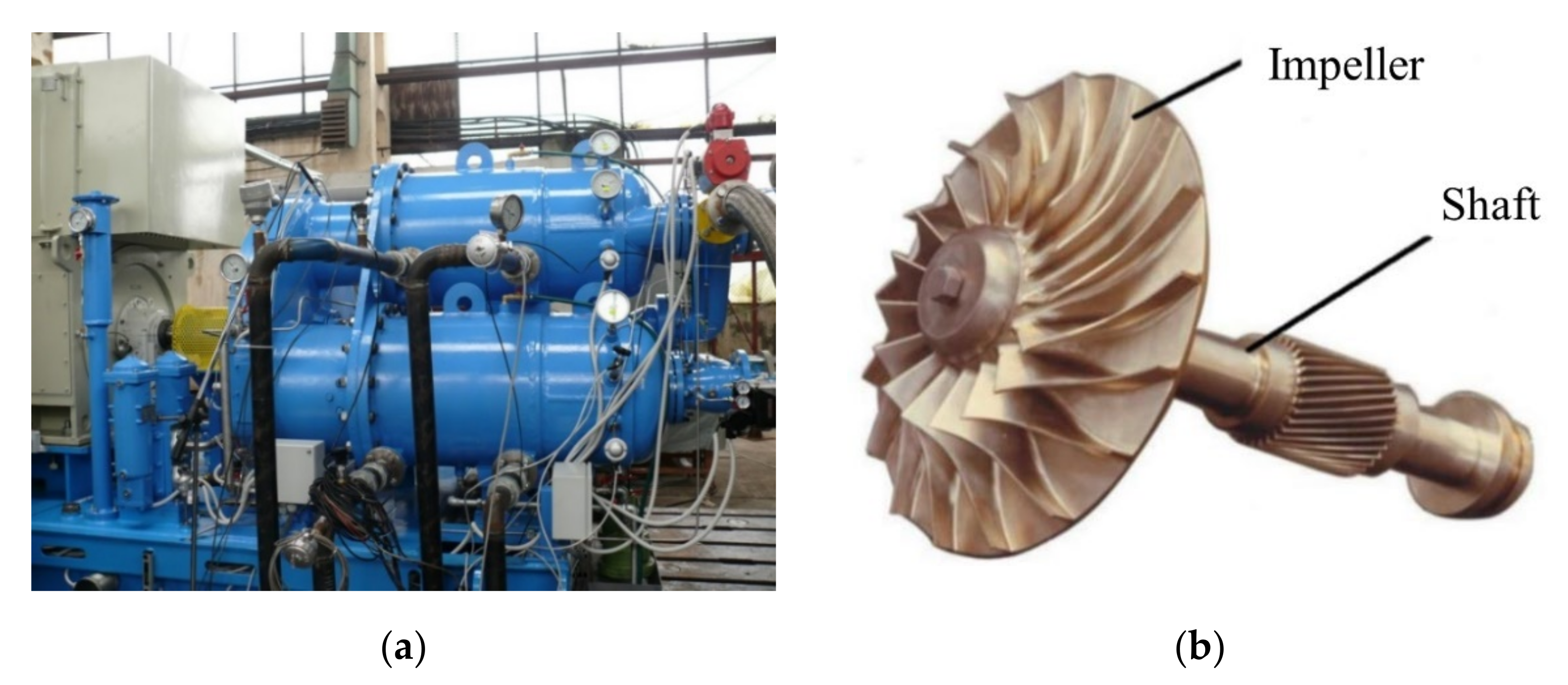


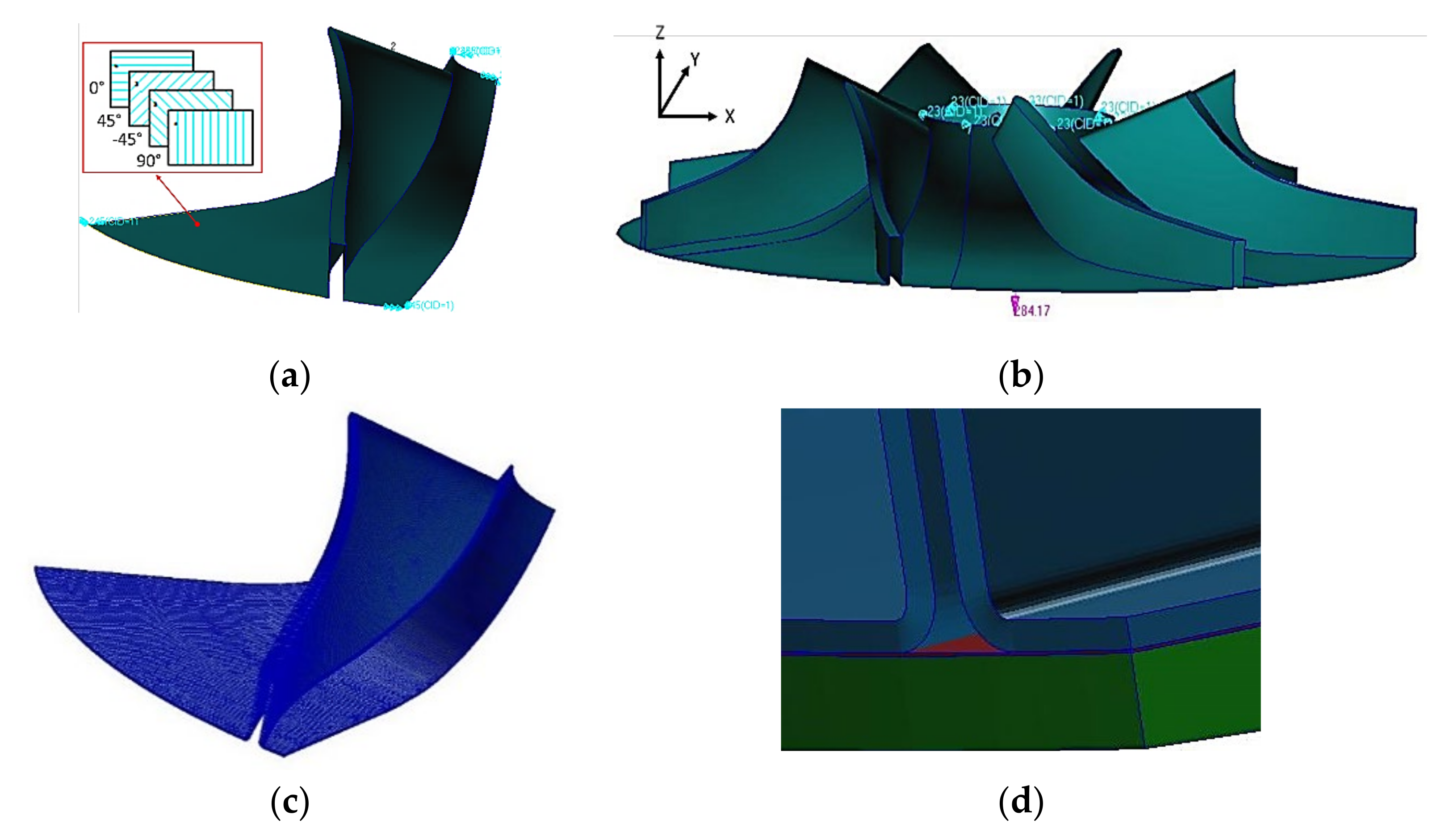
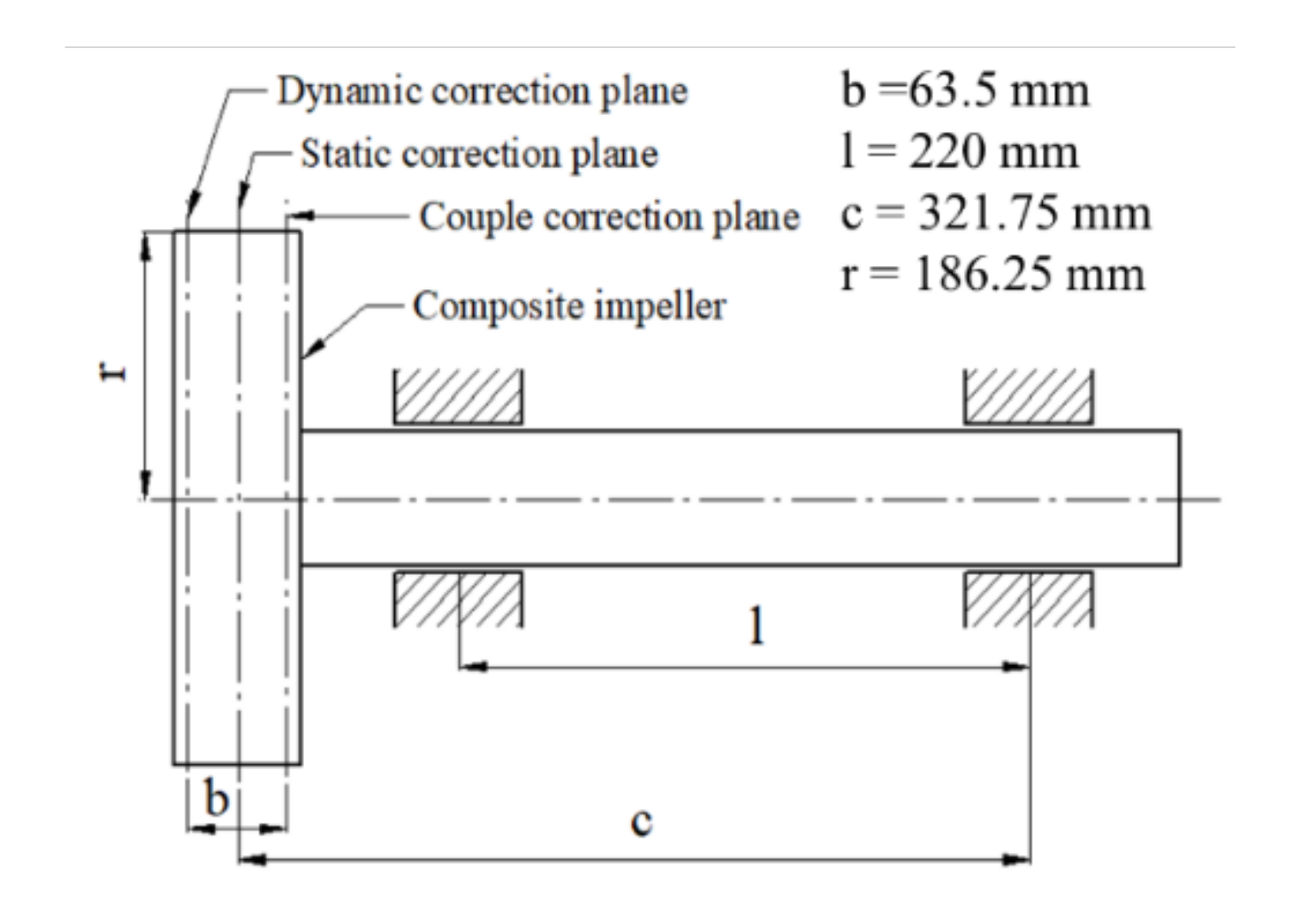

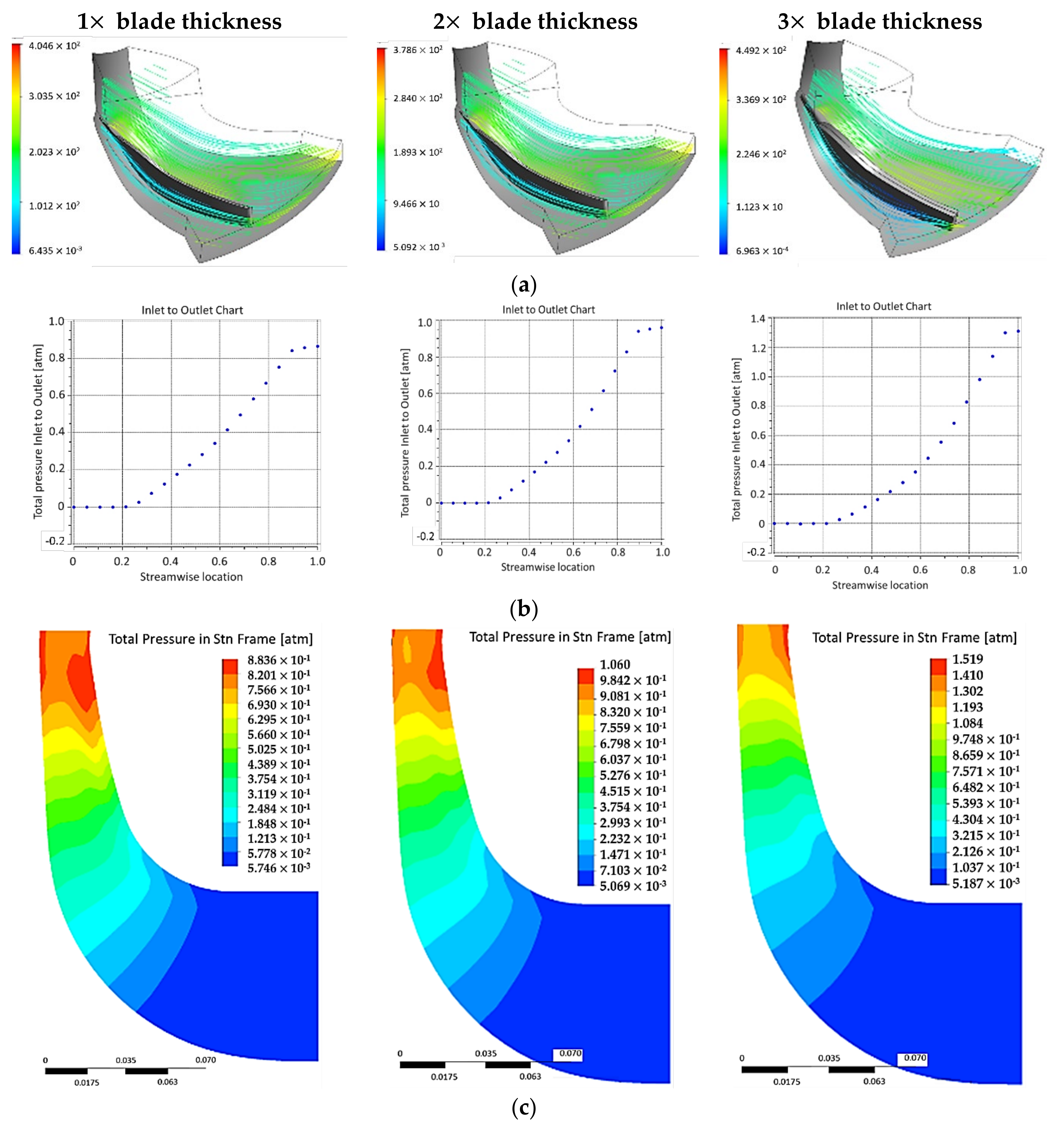
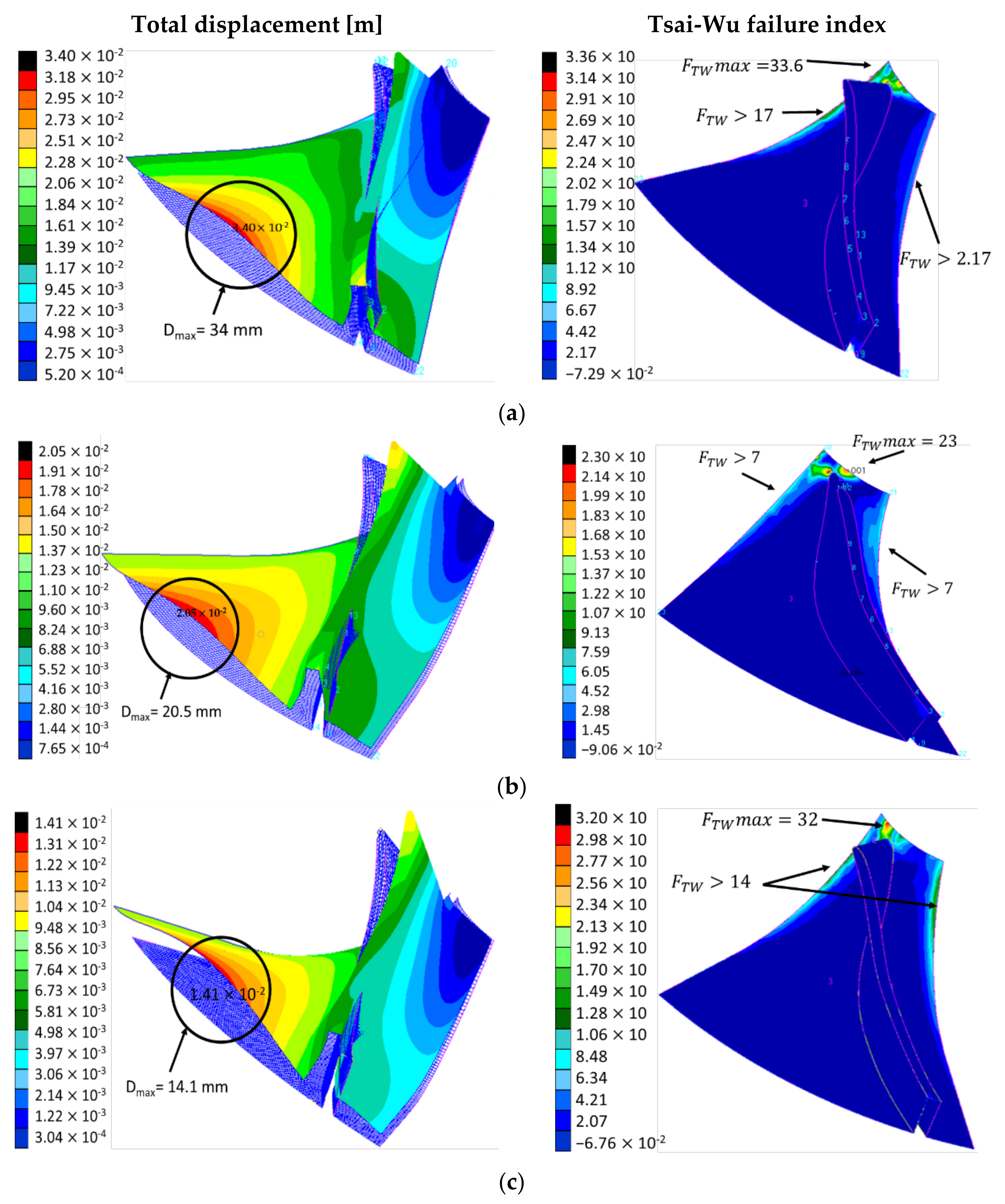
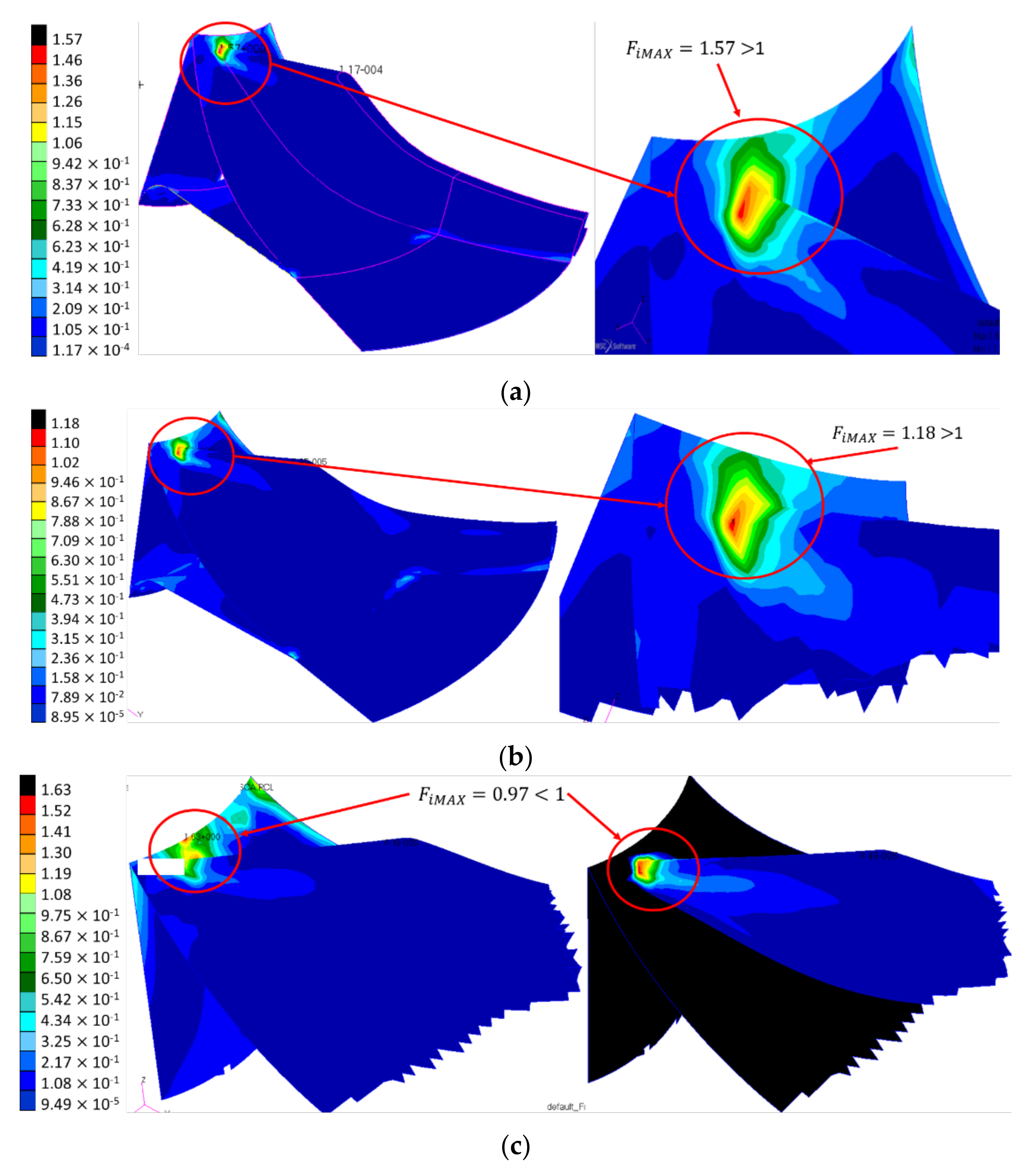
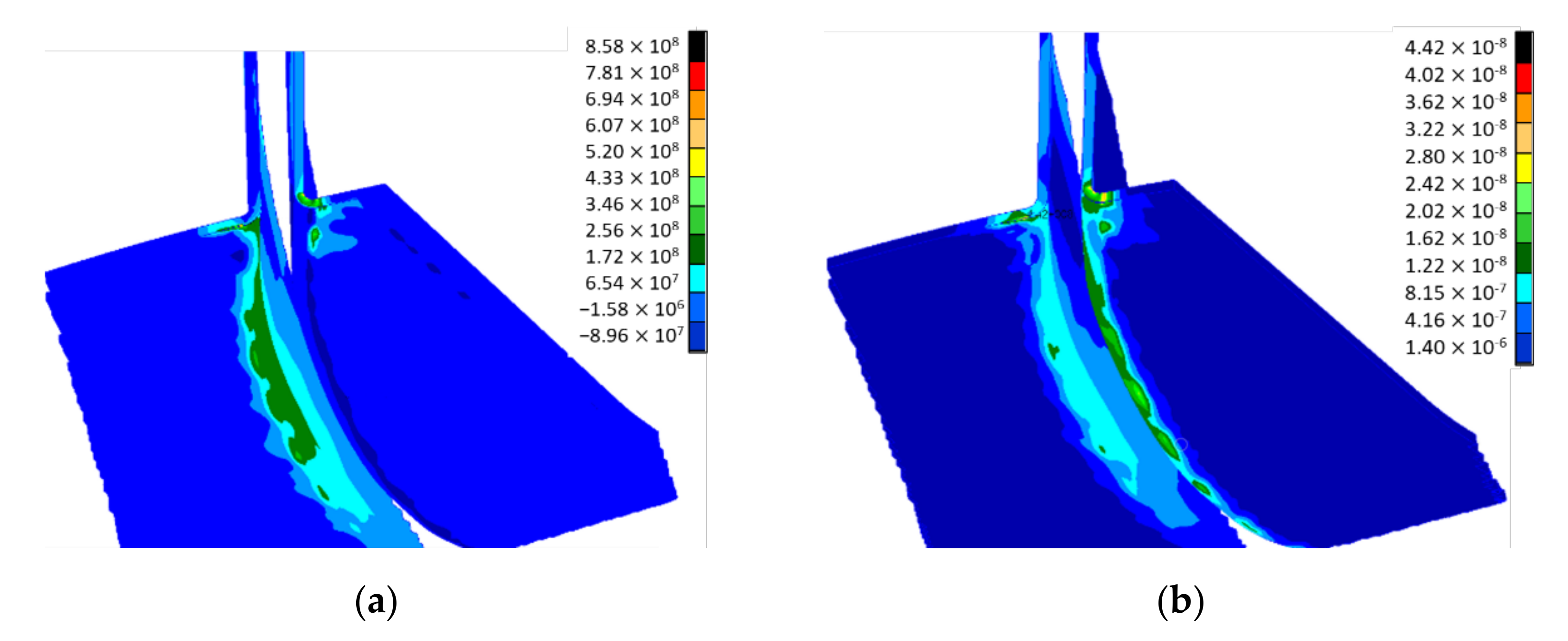

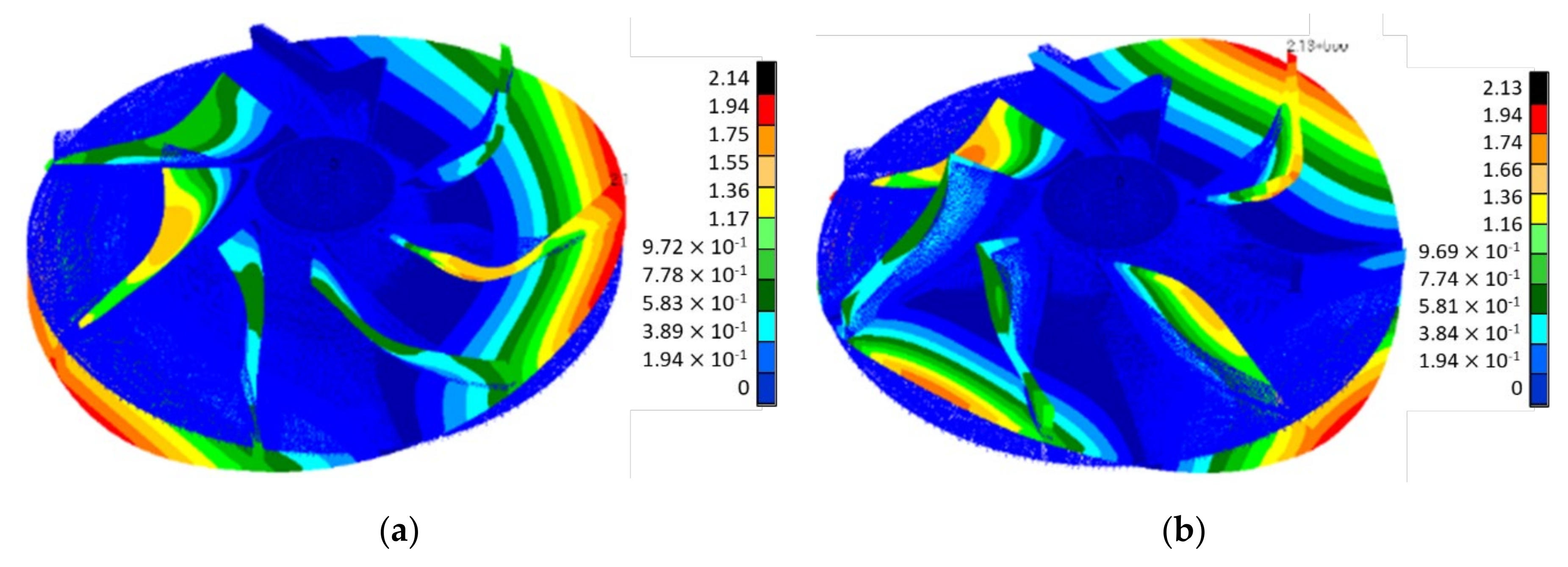
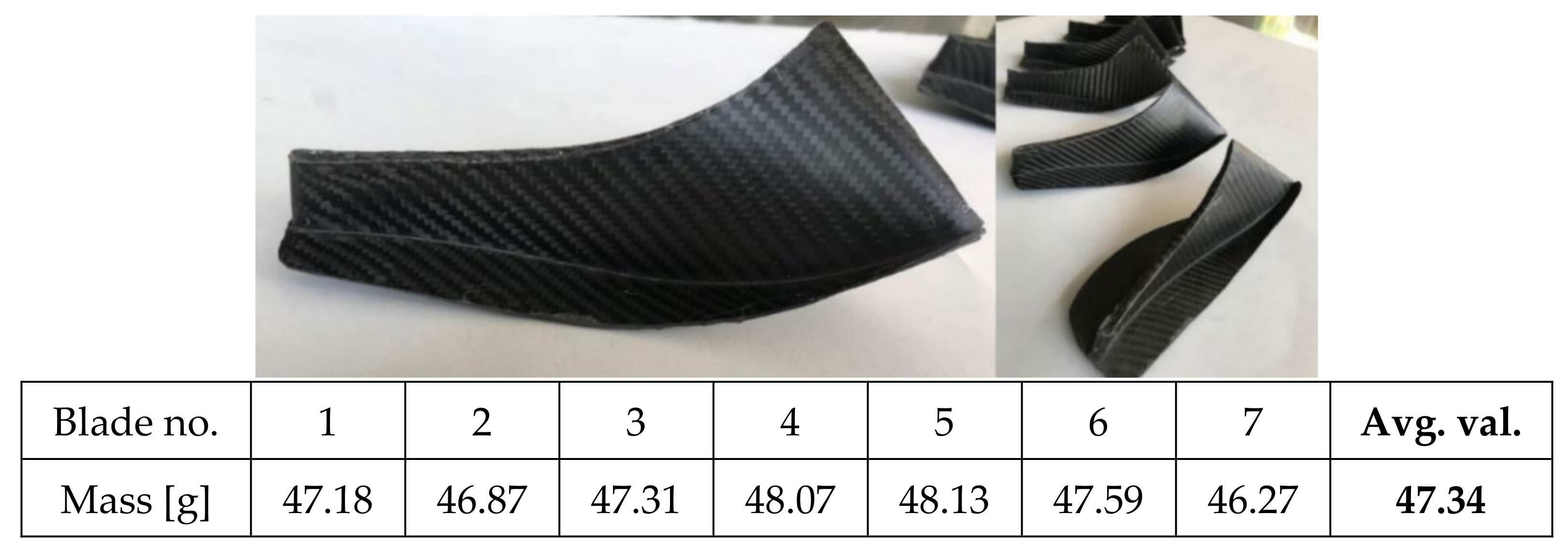
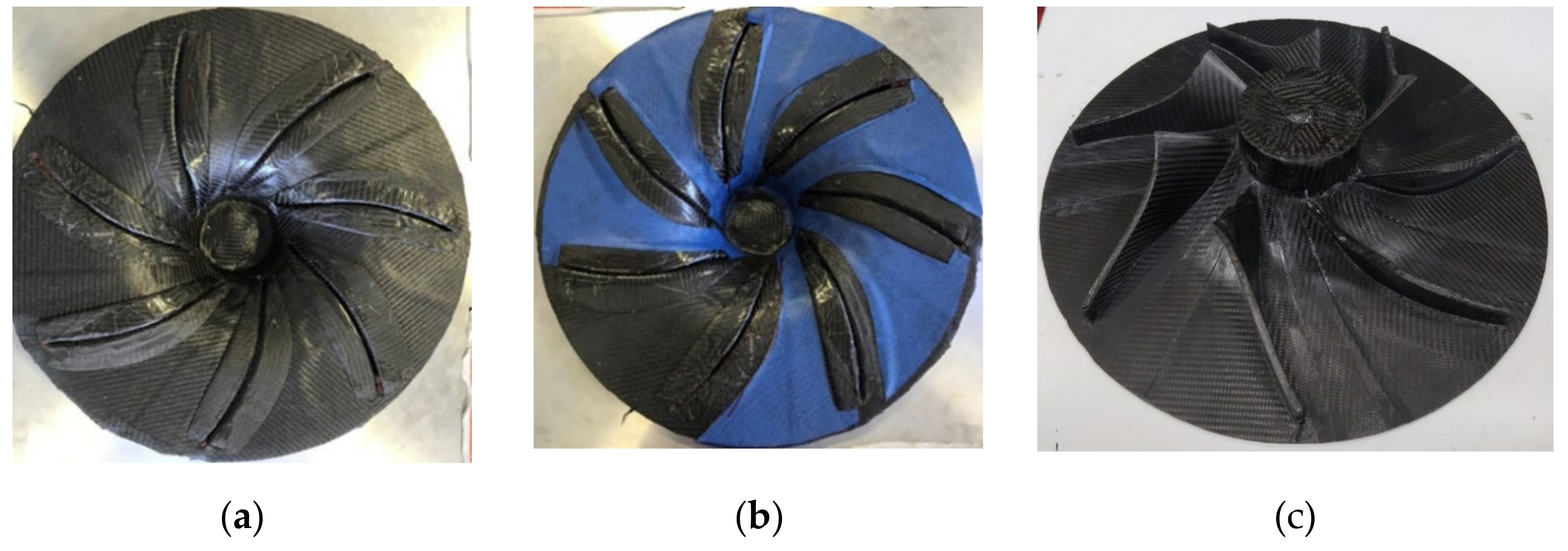
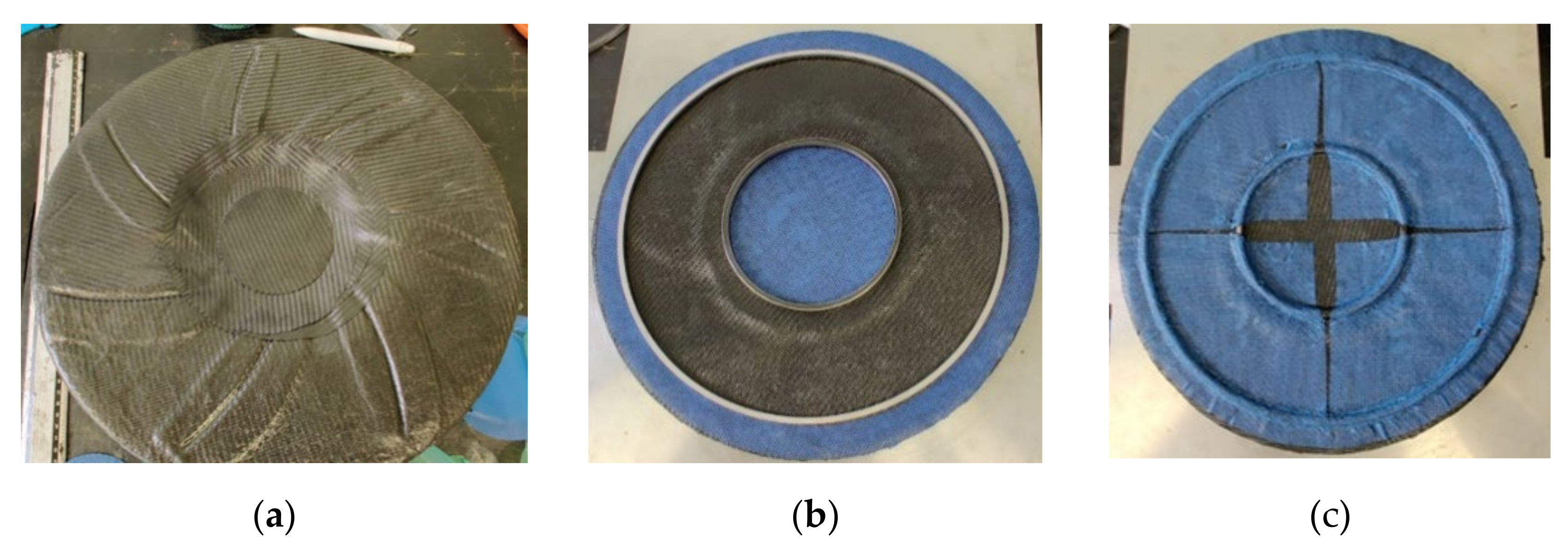
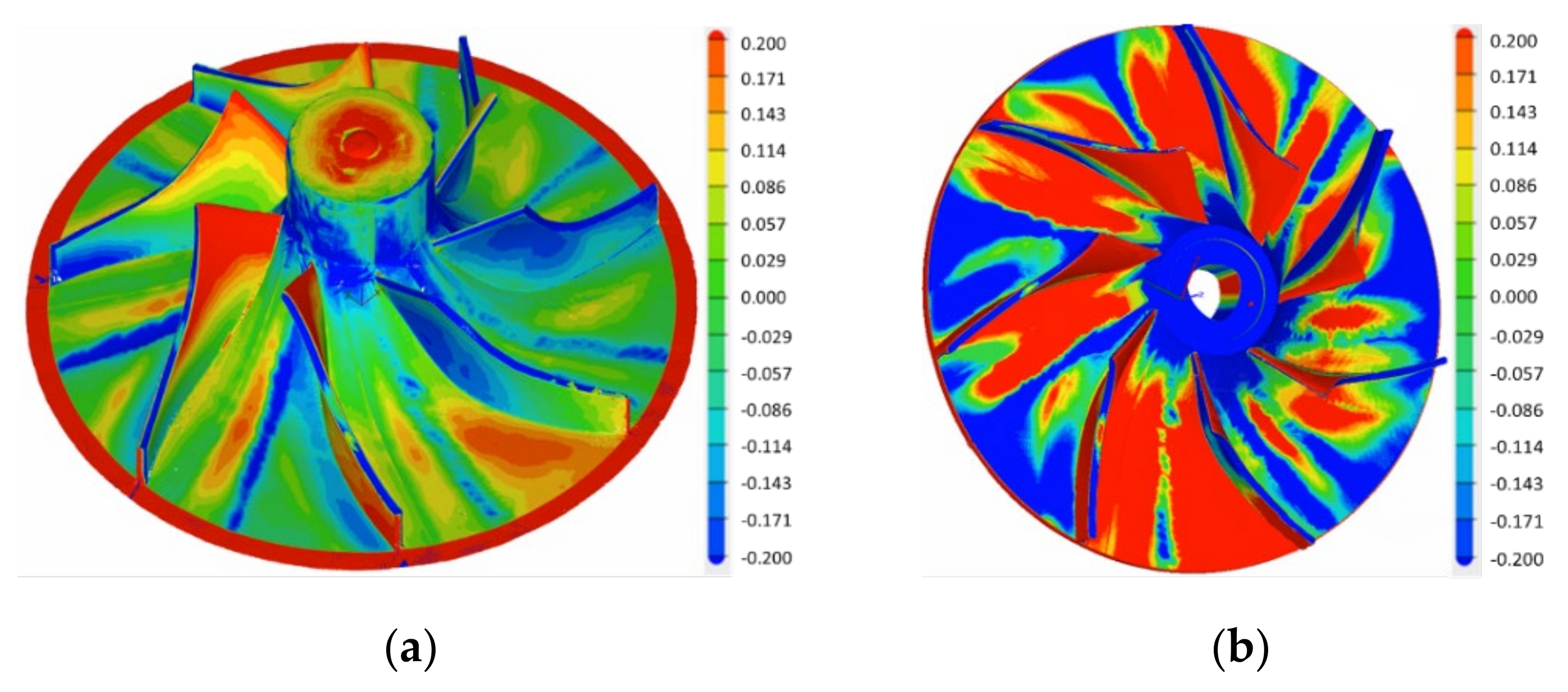
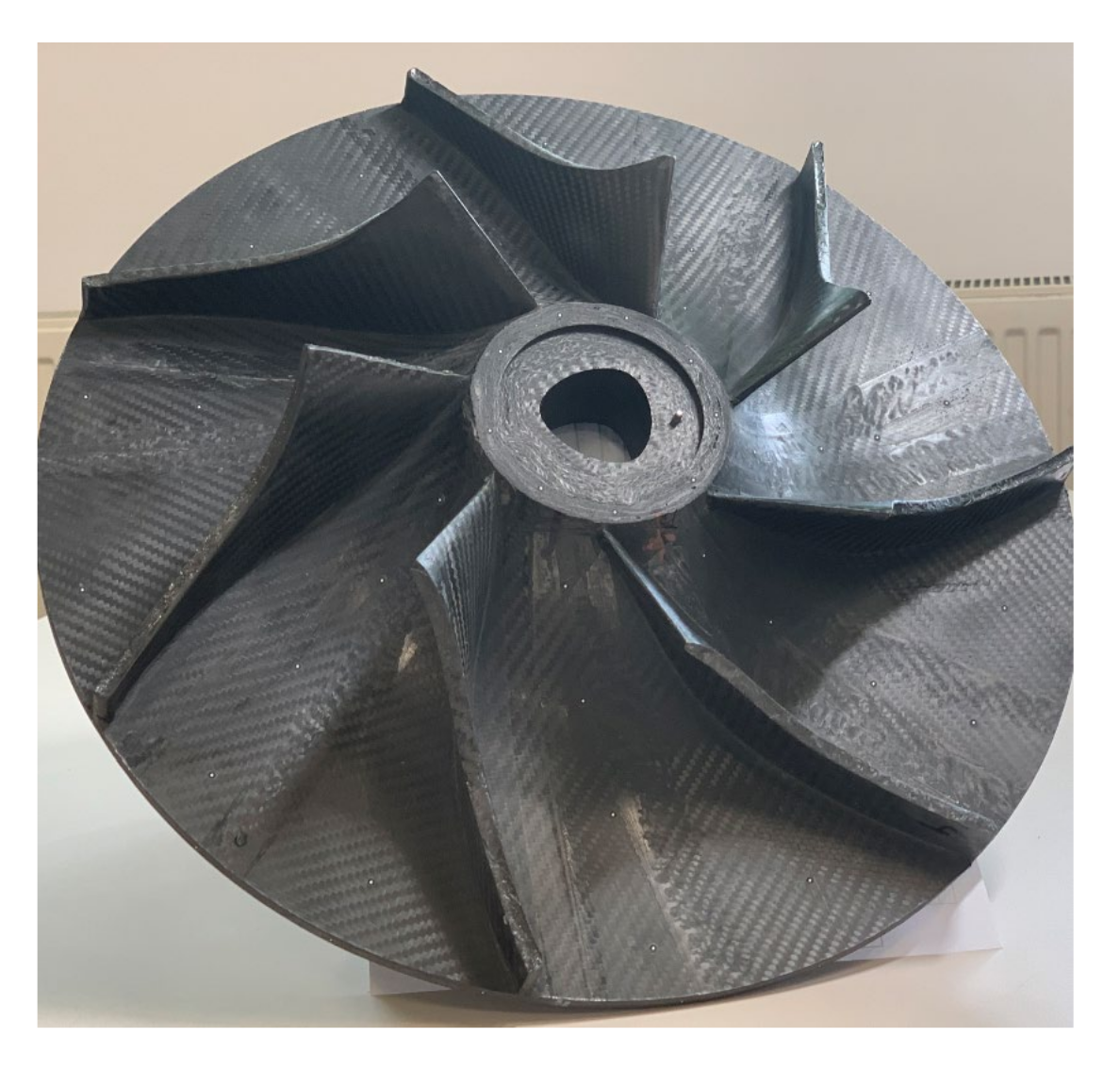
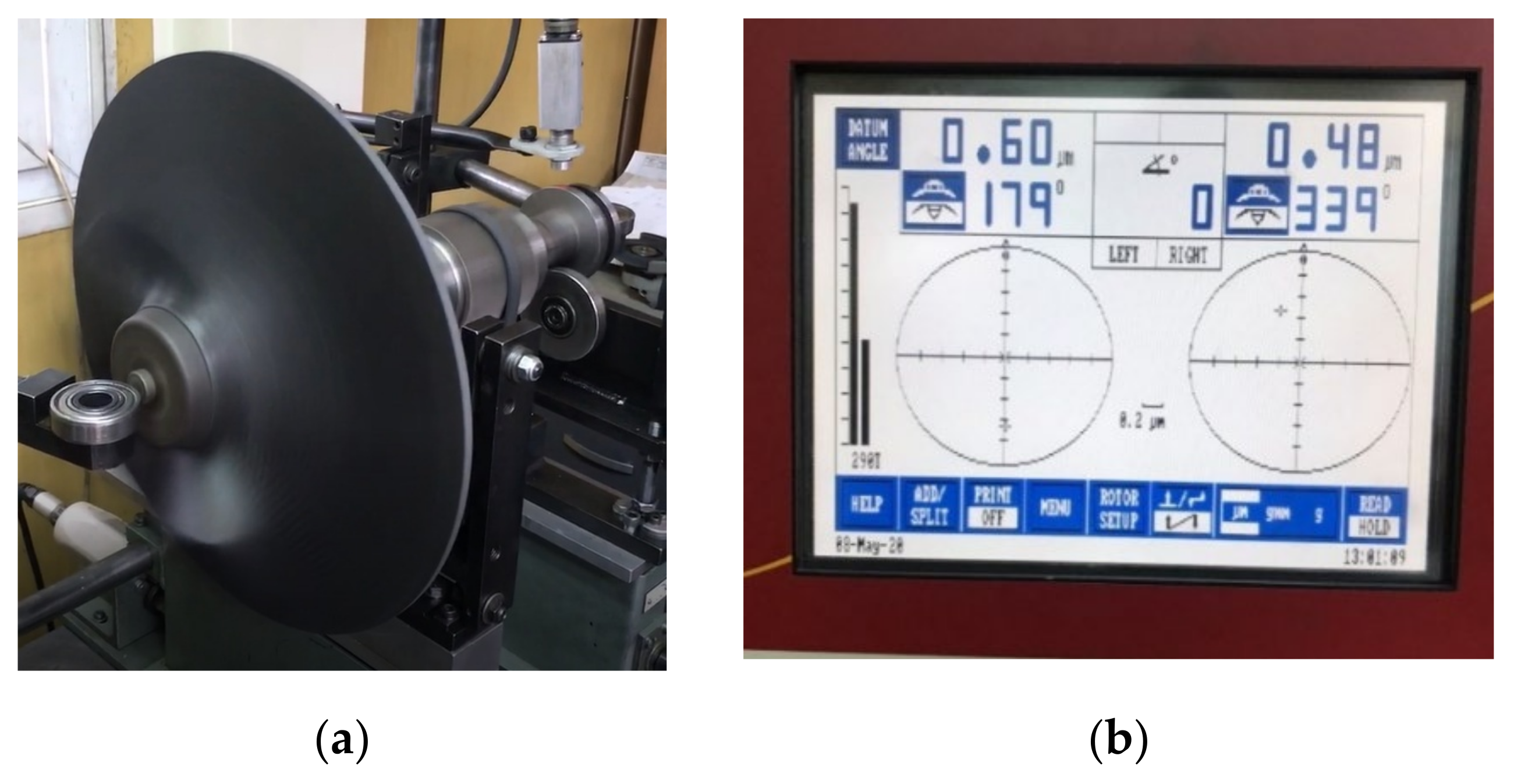
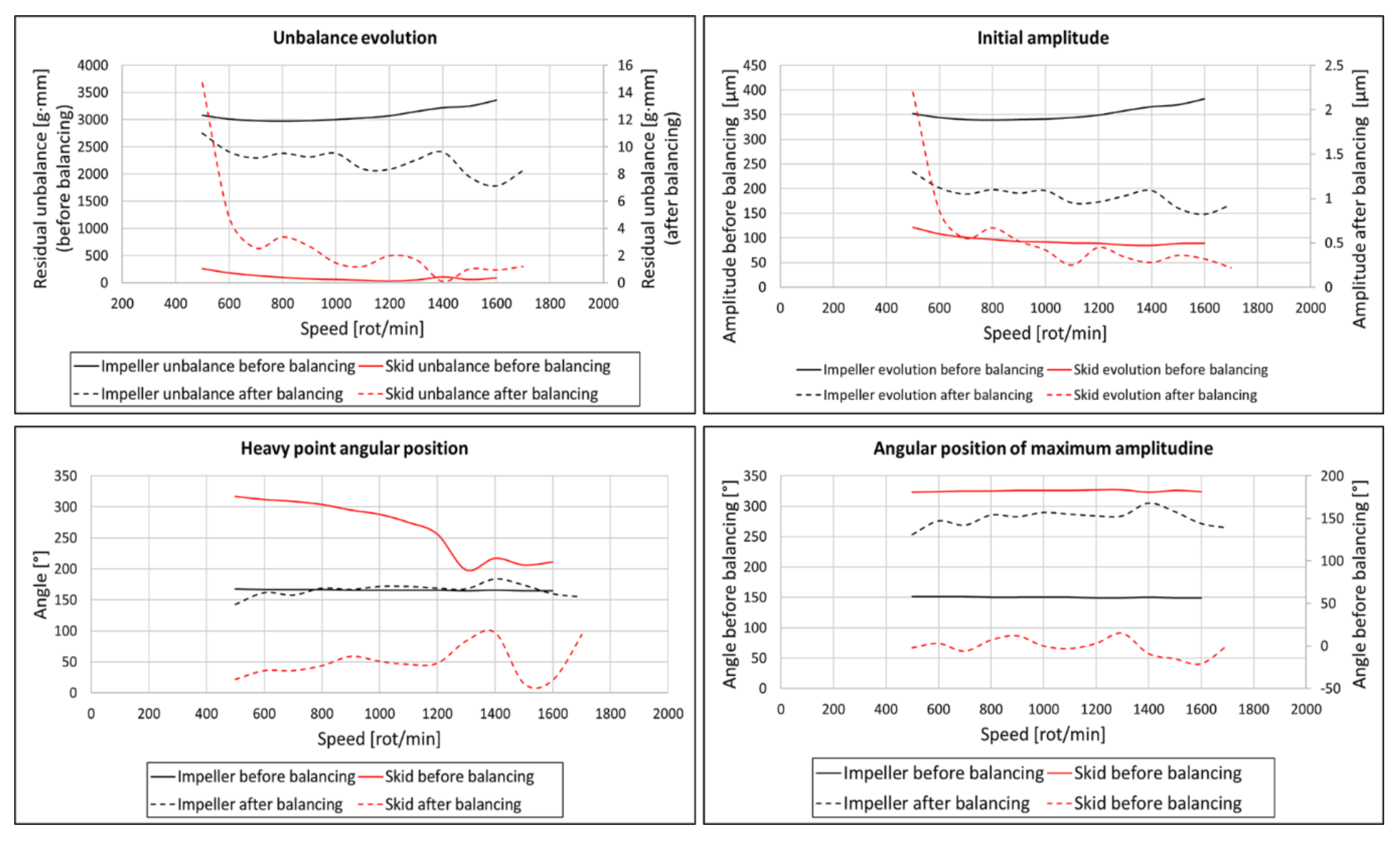
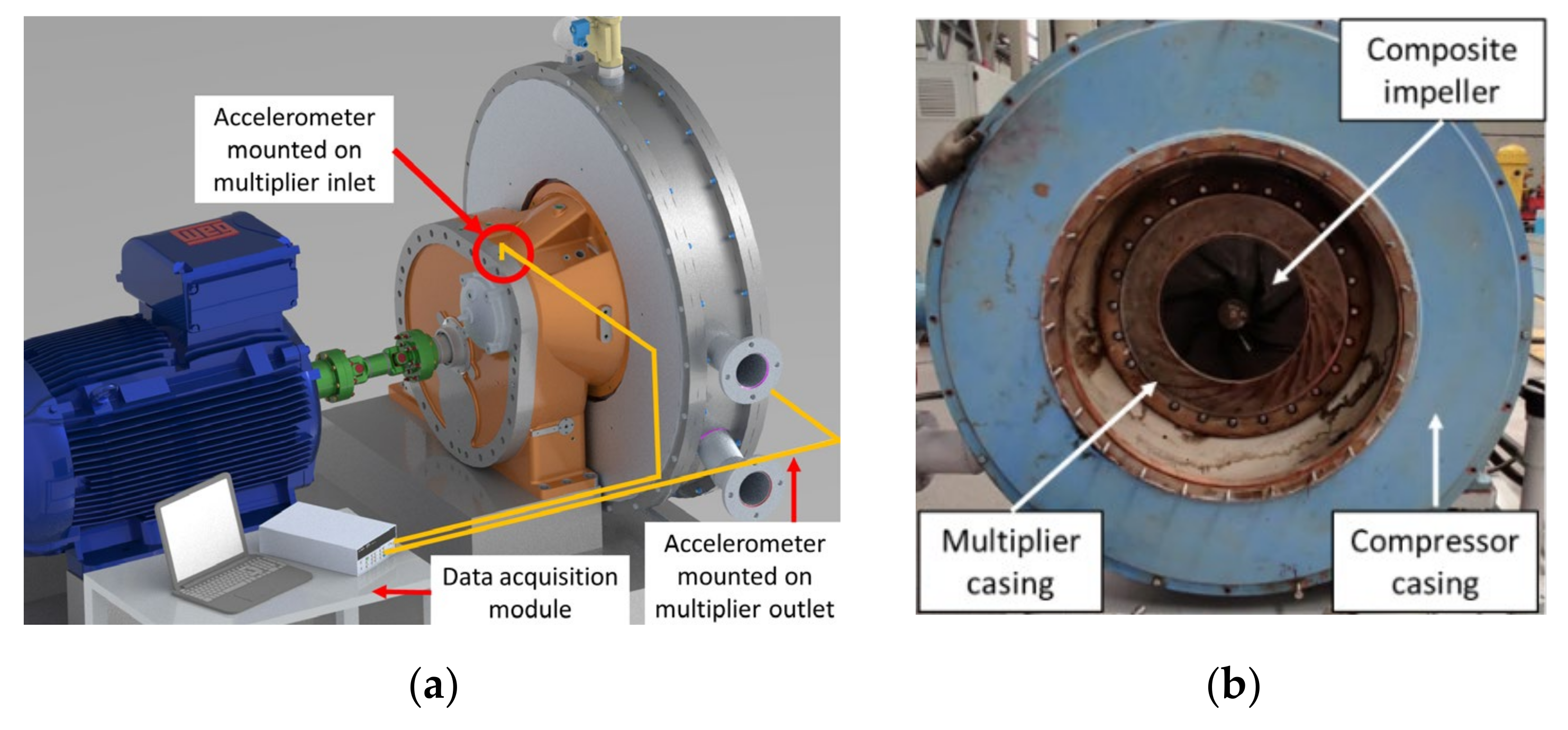
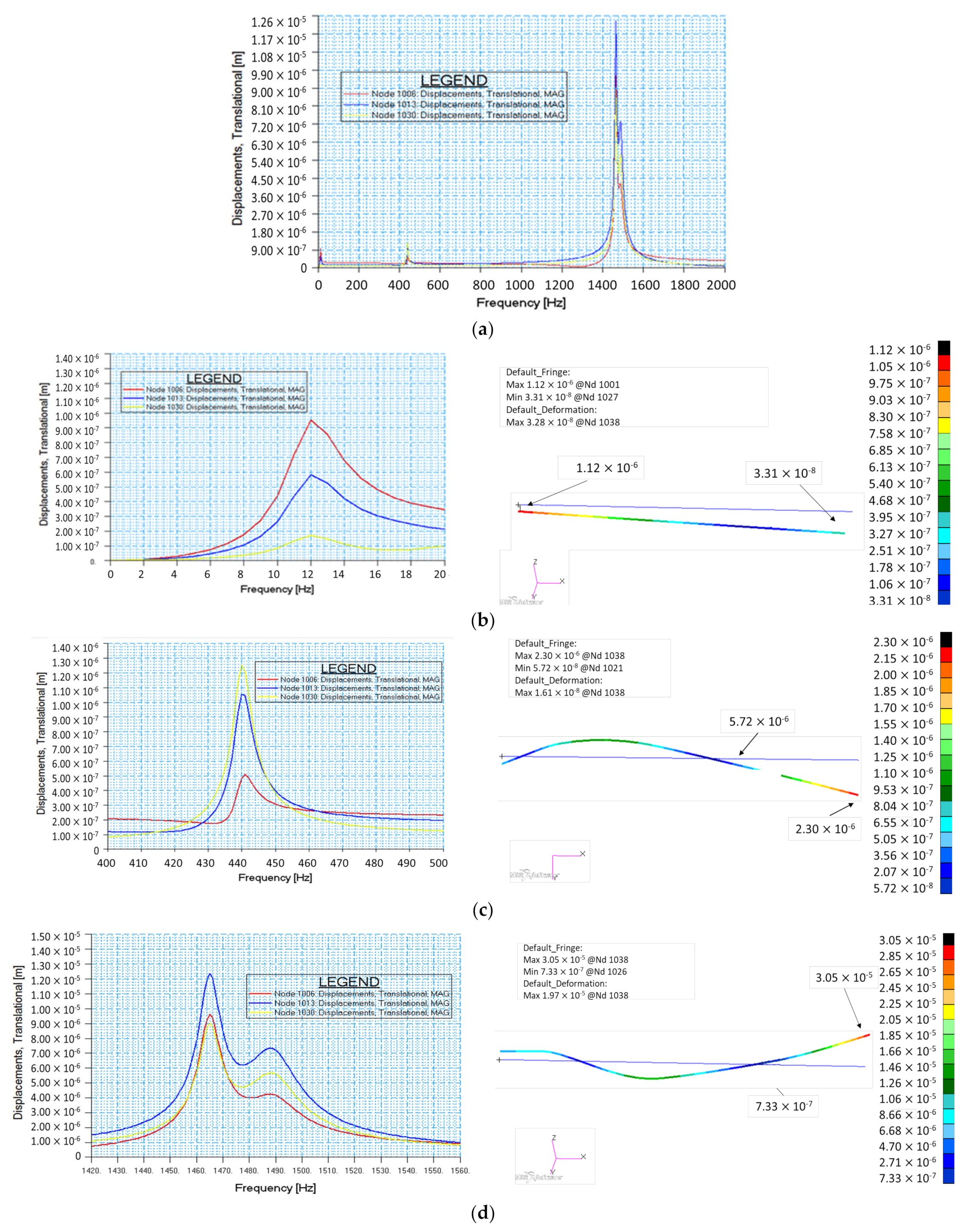
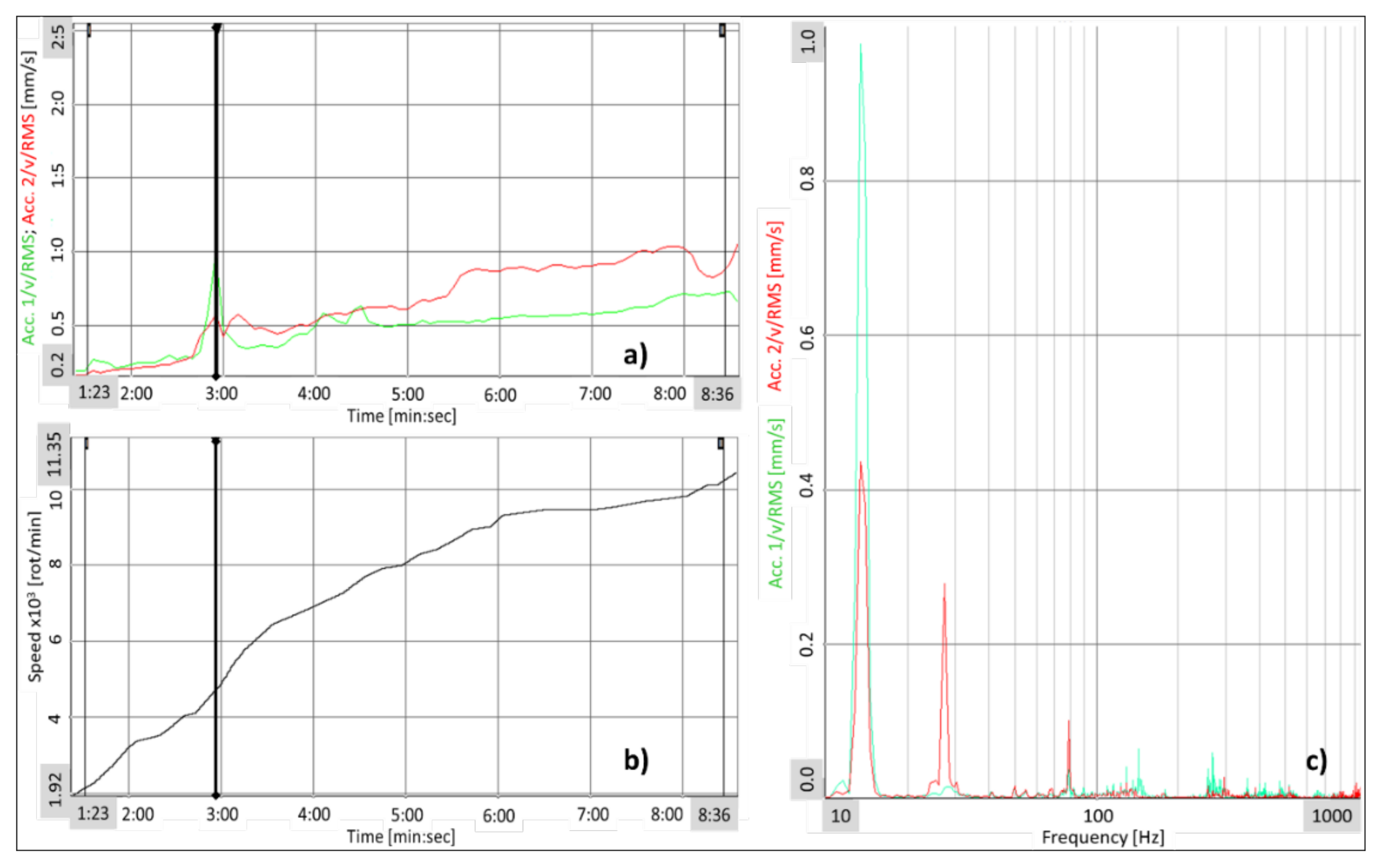

| M49/42%/200T2X2/CHS-3K | |||||||
|---|---|---|---|---|---|---|---|
| Property | ρ [g/cm3] | E [N/mm2] | CTE [ppm/°C] | UTS [MPa] | Flexural strength [MPa] | Compression strength [MPa] | ILSS [MPa] |
| Value | 1.47 | 68,000 | 2.1 10−6 | 1050 | 1000 | 730 | 60 |
| Aluminium 2024 | |||||||
| Property | Density [g/cm3] | Thermal conductivity [W/m-C] | Machinability [%] | CTE at 20 °C [ppm/°C] | CTE at 250 °C [ppm/°C] | ||
| Value | 2.78 | 121 | 70 | 23.2 | 24.7 | ||
| Blades No. | 7 Blades | 13 Blades | 15 Blades | 17 Blades | ||||||||
|---|---|---|---|---|---|---|---|---|---|---|---|---|
| Thickness [mm] | ||||||||||||
| Case | 7 Blades | 13 Blades | 15 Blades | 17 Blades | ||||||||
|---|---|---|---|---|---|---|---|---|---|---|---|---|
| 1.86 | 1.96 | 2.01 | 2.03 | 1.94 | 1.8 | 2.05 | 1.91 | N/A | 2.07 | 1.82 | N/A | |
| P [kW] | 251 | 279 | 355 | 297 | 280 | 285 | 301 | 290 | N/A | 310.4 | 284 | N/A |
| η [%] | 78.6 | 90.1 | 91.5 | 90.8 | 88.8 | 78.7 | 91.7 | 86.4 | N/A | 91.8 | 80.7 | N/A |
| Case | 7 Blades | 13 Blades | 15 Blades | 17 Blades | ||||||||
|---|---|---|---|---|---|---|---|---|---|---|---|---|
| Score [%] | N/A | 94.33 | 103.53 | N/A | 93.66 | 88.33 | N/A | 93.02 | N/A | 100 | 89.07 | N/A |
| Measurement no. | 1 | 2 | 3 | 4 | 5 | 6 | 7 | Std. Dev. | |
|---|---|---|---|---|---|---|---|---|---|
| Blade | Ra | 1.406 | 1.021 | 1.318 | 1.341 | 1.235 | 1.331 | 1.271 | 0.047 |
| Rz | 22.206 | 24.336 | 21.898 | 22.813 | 23.315 | 20.966 | 24.072 | 0.457 | |
| Disc | Ra | 1.306 | 1.303 | 1.299 | 1.322 | 1.178 | 1.109 | 1.227 | 0.031 |
| Rz | 18.641 | 24.865 | 18.069 | 20.183 | 17.351 | 19.449 | 23.179 | 1.049 | |
 |
Publisher’s Note: MDPI stays neutral with regard to jurisdictional claims in published maps and institutional affiliations. |
© 2021 by the authors. Licensee MDPI, Basel, Switzerland. This article is an open access article distributed under the terms and conditions of the Creative Commons Attribution (CC BY) license (https://creativecommons.org/licenses/by/4.0/).
Share and Cite
Mihalache, R.; Vintila, I.S.; Deaconu, M.; Sima, M.; Malael, I.; Tudorache, A.; Mihai, D. Novel Carbon Fibre Composite Centrifugal Impeller Design, Numerical Analysis, Manufacturing and Experimental Evaluations. Polymers 2021, 13, 3432. https://doi.org/10.3390/polym13193432
Mihalache R, Vintila IS, Deaconu M, Sima M, Malael I, Tudorache A, Mihai D. Novel Carbon Fibre Composite Centrifugal Impeller Design, Numerical Analysis, Manufacturing and Experimental Evaluations. Polymers. 2021; 13(19):3432. https://doi.org/10.3390/polym13193432
Chicago/Turabian StyleMihalache, Radu, Ionut Sebastian Vintila, Marius Deaconu, Mihail Sima, Ion Malael, Alexandru Tudorache, and Dragos Mihai. 2021. "Novel Carbon Fibre Composite Centrifugal Impeller Design, Numerical Analysis, Manufacturing and Experimental Evaluations" Polymers 13, no. 19: 3432. https://doi.org/10.3390/polym13193432
APA StyleMihalache, R., Vintila, I. S., Deaconu, M., Sima, M., Malael, I., Tudorache, A., & Mihai, D. (2021). Novel Carbon Fibre Composite Centrifugal Impeller Design, Numerical Analysis, Manufacturing and Experimental Evaluations. Polymers, 13(19), 3432. https://doi.org/10.3390/polym13193432







